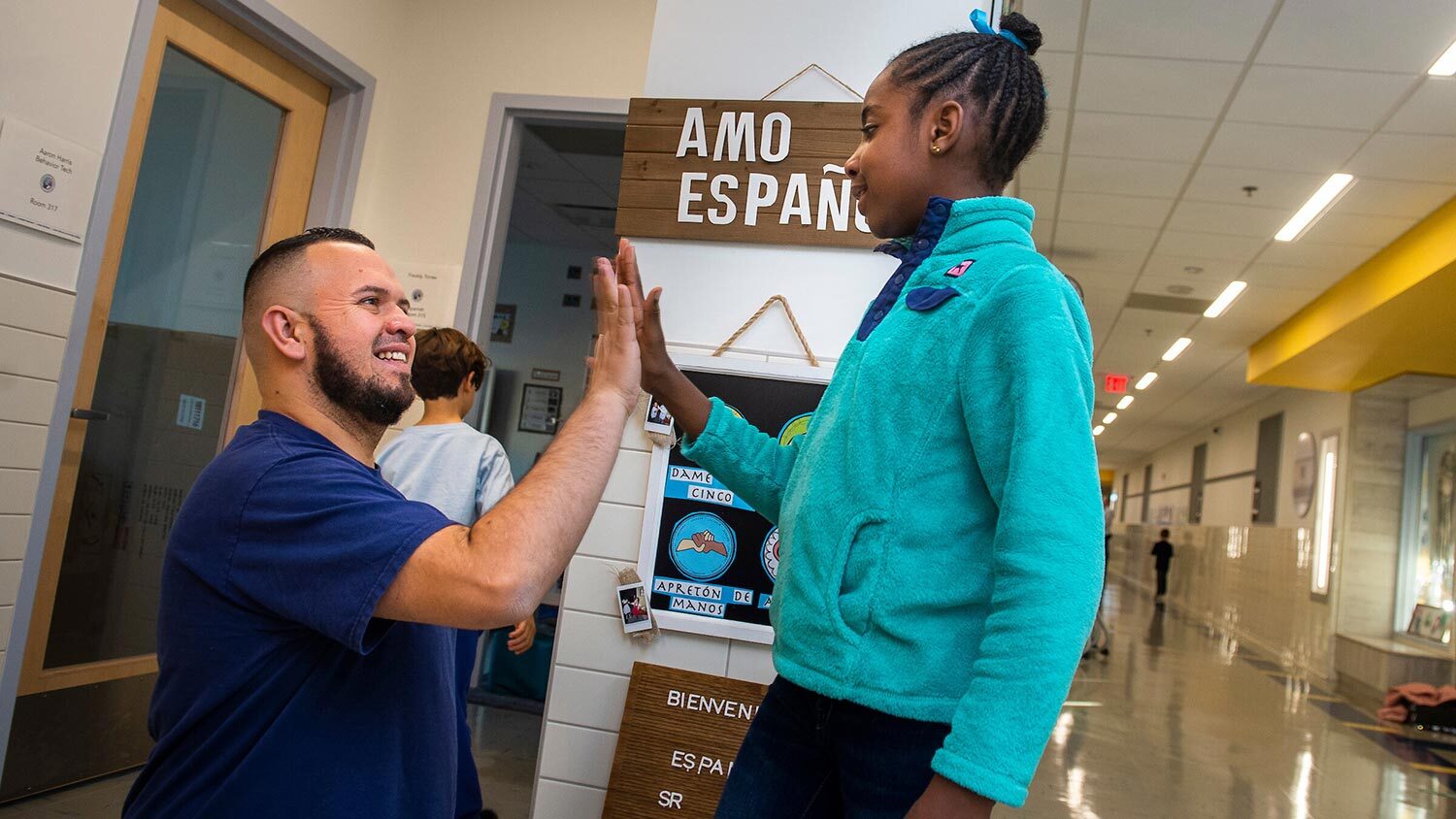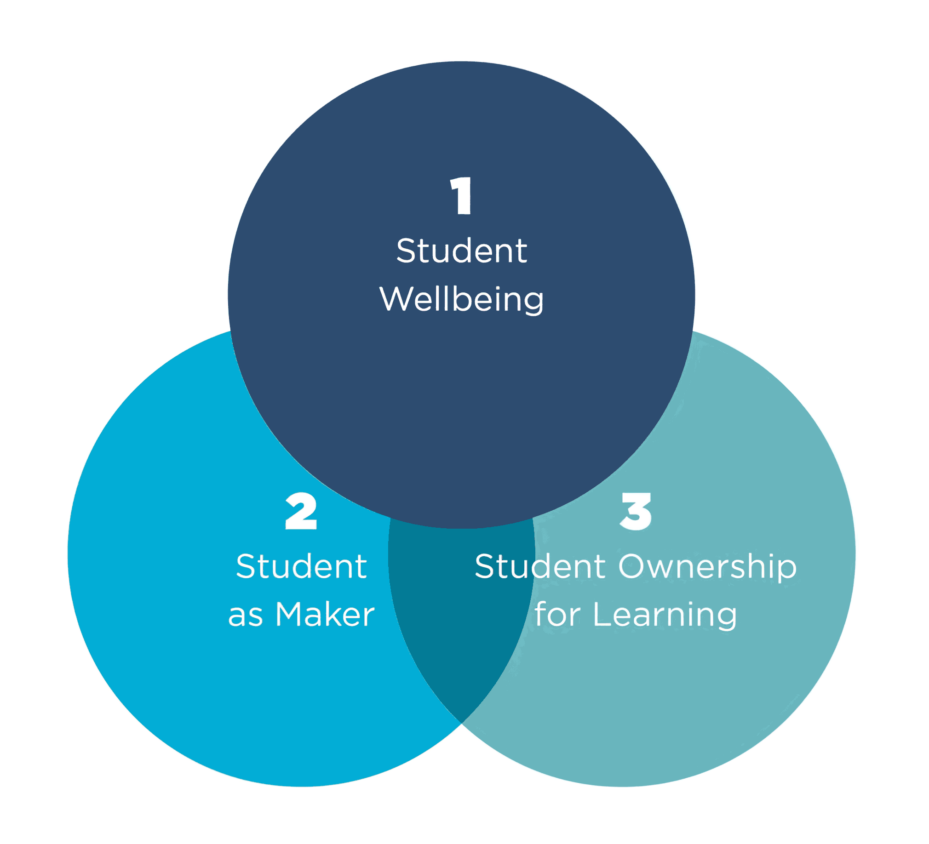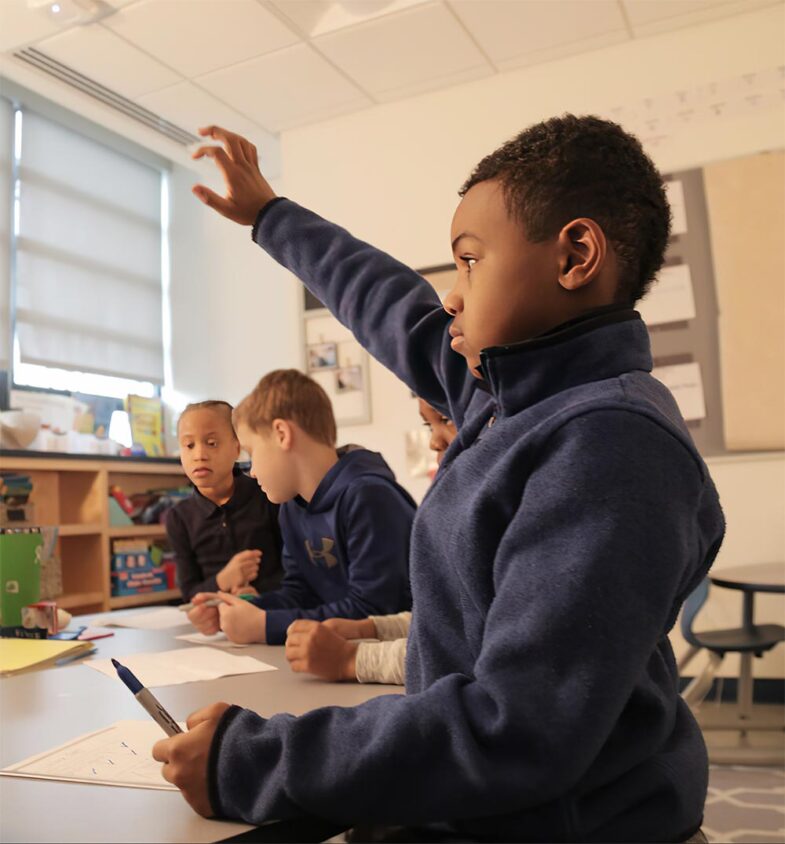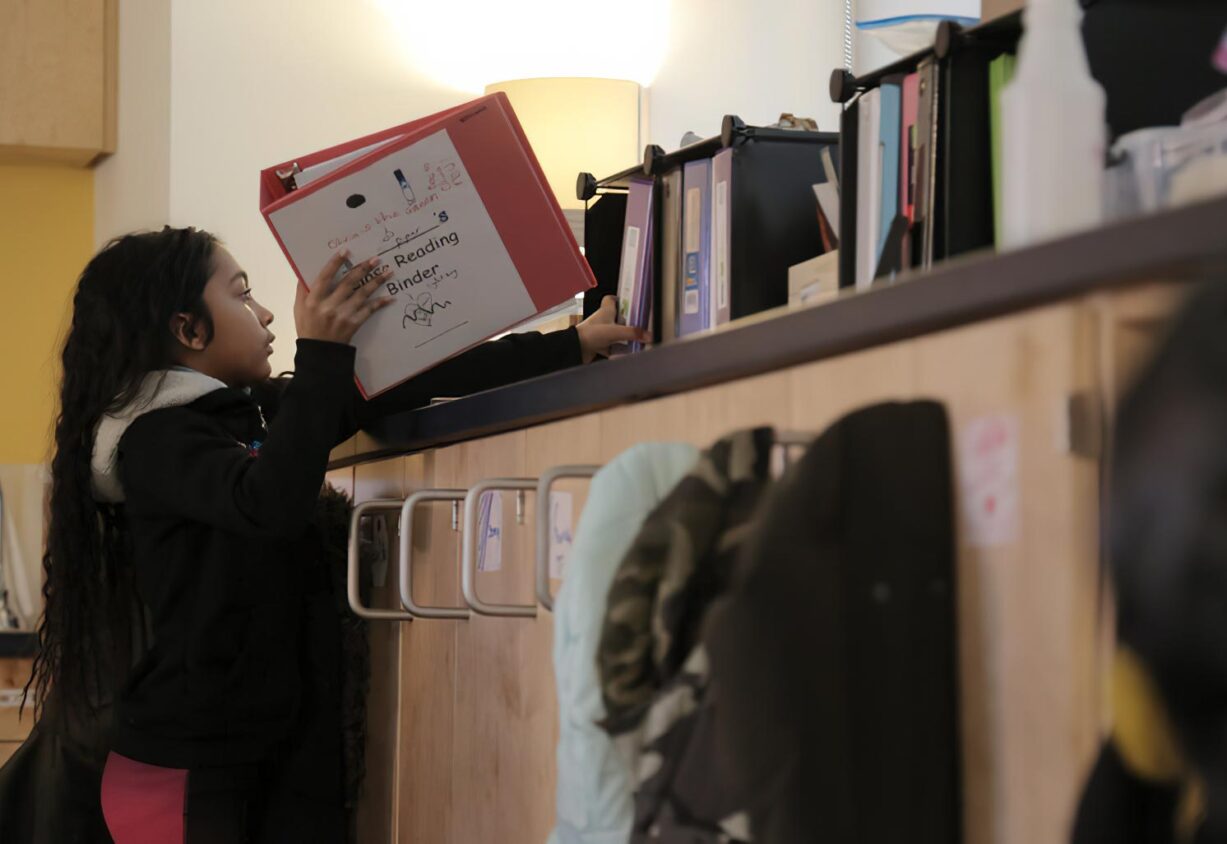A Summer of Designing for Diversity, Equity, and Inclusion in Remote or Hybrid Learning: DC Public Schools’ Van Ness Elementary

Cynthia Robinson-Rivers is the principal of Van Ness Elementary in DC Public Schools and Katie Bowen is a partner at Transcend. Below, they share the story of how design teams have moved the school forward and kept it agile and responsive during the complexities of 2020. School leaders can readily borrow the structures and methods of design teams for their local contexts. Creating systematic practices that activate staff as designers is a powerful way of creating schools that can recover and respond equitably and inventively to crises.
Context
In 2015, the District of Columbia Public Schools (DCPS) relaunched Van Ness Elementary, a school that had been shuttered for nine years. The school reopened under the leadership of Cynthia Robinson-Rivers. In the past five years, Principal Rivers and her team have designed their way through many challenges and know that many more lie ahead. The events of 2020–COVID and the powerful movement around racial justice and equity we are in the midst of have amplified the team’s focus on design.
As districts around the country reorganize and respond in this moment, Van Ness and Transcend want to share an interim progress report to show what can be accomplished when a deeply supportive district, local government, non-profits, and of course students, staff, and community work together and independently to redesign school as an environment where all learners can thrive academically, emotionally, and physically. What follows is the story of how the Van Ness community came together this summer to make the school an even more equitable, inclusive, relevant learning environment for all its students.
Van Ness was relaunched on the growing body of research on social emotional well-being in children: the understanding that creating a school environment in which kids feel safe and connected is a foundational building block for students to become academic learners. From the beginning, the staff, supported by Transcend, has been intentional about using shared routines and practices that create an environment in which students can thrive as learners, learn to manage emotions and stress, and regularly make meaningful contributions to their community.

Van Ness’s design focuses on three key areas which they think are crucial to the development of the whole child while also achieving excellence in academics:
This is a robust, powerful model. Through the events of this year, however, the Van Ness community realized they could do even better.
June 2020: Staff Engagement & Reflection
The 2019-20 school year ended a few weeks early, and the Van Ness team had the opportunity to participate in district-wide professional development and to engage in school-specific reflection on how they could redesign their model.
During the first weeks of June, the school district offered a range of PD that emphasized staff wellness and the need for healing-centered practices to start the year. DCPS partnered with a variety of expert organizations including Turnaround for Children, Transcend, and Pure Edge to support this work. This training built on the work done by the DCPS Equity Office over the past several years, where they had offered trainings from Courageous Conversation and a variety of other equity-focused capacity-bulding PD. Dr. Lisa Delpit, for example, had presented to DCPS principals last summer. The Van Ness team was deeply appreciative of the district commitment to building foundational knowledge on equity issues, knowledge they could build on this summer.

In addition, the school community met to reflect on how they’d use what they learned to improve their model. First, they used a Diversity, Equity, and Inclusion (DEI) lens to explore what might be missing from the current school model, examine the resources available, and brainstorm solutions. Next, they began to re-design current practices for a learn-from-home or physically distanced setting, drawing on lessons from the spring.
They also took time to recover and reconnect. Jordan Only, a teacher new to Van Ness, encouraged the team to use storytelling to deepen relationships. She modeled what this could look like by recording her personal story about growing up in a racist town in Texas. This example has a powerful impact, and they now play to use storytelling much more to build their community.
Summer 2020: DEI Working Groups
12 staff and parents volunteered to form a DEI working group to move the work forward. The full group meets weekly to align on vision and to give input on each focus area. Between meetings, subgroups work to advance each of the group’s four focus areas:
- Socio-emotional and behavioral supports. How do we ensure that our approach to wellbeing responding to behavior supports equity, especially knowing the wide range of our students’ needs?
- Curriculum and pedagogy. How can we ensure that our curriculum and pedagogy are inclusive and culturally relevant?
- Caregiver engagement. How can we engage families in our work to re-design so that they are active partners in this work?
- Professional development. What training and support do our teachers and families need next to support continued growth?
DEI Working Group Preliminary Priorities
During the past three weeks, each subgroup has come up with priorities for their focus area.
1. SOCIO-EMOTIONAL AND BEHAVIORAL SUPPORTS PRIORITIES:
- Priority 1: Review our SEL practices to identify possible areas of improvement and to ensure they are implemented equitably. Van Ness’ current approach to well-being is made up of many practices that promote equity. For example:
- Van Ness has a commitment to no out of school suspensions and an in-school suspension program that is restorative and focuses on reflection
- Students are frequently given choice and independence as they complete projects, which builds independence and resourcefulness as opposed to compliance and obedience
- Teachers notice and acknowledge students in a nonjudgmental manner while encouraging students to see their behavior as helpful and supportive of the community
2020 Iteration: While these practices support equity on paper, it is equally important to make sure these practices are implemented equitably. The Van Ness team will involve students in sharing how they experience the model and in generating ideas for improvement. In addition, they plan to create teacher accountability buddies to understand what’s working and how they can improve.
- Priority 2: Figure out where Van Ness needs to expand support with race and equity in mind, such as through additional supports for historically marginalized students. When the team looks at data around behavior, such as behavior incident data or data on in-school suspension, it is clear there are students for whom the approach is not yet enough.
2020 Iteration: They plan to further involve students and use case studies to consider how the approach could be improved to work for their most struggling students.

2. CURRICULUM AND PEDAGOGY PRIORITIES
- Priority 1: Increase cultural relevance and inclusivity of their curriculum. Here, the team is building on a strong foundation laid by the district. DCPS has developed some amazing units of study on social and racial justice issues (e.g. a 2nd grade unit on activism where students study Mandela, Malala, and others).
2020 Iteration: The Van Ness team plans to systematize and expand these units. In addition, they will explore pedagogical practices that promote equity in the classroom and will leverage the maker spaces currently in their classrooms to create projects that allow students to authentically explore themes related to diversity, equity, and inclusion. They will build on their maker-centered learning approach with these equity-focused projects so that the race and equity work does not feel like an addition, but rather is fully integrated into making. Teachers and students will identify relevant problems for the community and problems related to race that students can tackle through making.
- Example 1: Improving the health of the Anacostia River, which is very polluted and runs near our school. Students will investigate what could improve the health of the community and steps they could take to support this work.
- Example 2: DCPS has many unregistered voters and voter rights issues. How might students learn about and impact these issues?
3. CAREGIVER ENGAGEMENT PRIORITIES
The Van Ness team will continue investing heavily in building strong relationships with families, and will especially focus on engaging them in conversations about DEI in the community.
- Priority 1. Use alternative strategies for relationship building. Typically, the team does home visits and a series of summer events to get to know families, prioritizing students with the greatest needs. While those are not possible this year given the need to be physically distant, the team is considering protocols for Zoom catch ups or a sidewalk visit (6 feet apart).
- Priority 2. Engage families across lines of difference in DEI work. The Van Ness team will include parents in book study conversations and reflections, explicitly encourage connecting families across racial difference, and examine their practices — formal and informal — to ensure the school is welcoming and fair to all families, regardless of ethnicity or background.
2020 Iteration: Parents are included in the DEI working group and will work closely with the PTO to establish community building events. Staff trainings that focus on DEI will be shared with families as well so that they are addressing these topics as an entire school community, rather than just school staff and students.
4. PROFESSIONAL DEVELOPMENT PRIORITIES
- Priority 1. Launch staff book study to deepen the school’s understanding of culturally responsive teaching. The entire staff will read Zaretta Hammond’s Culturally Responsive Teaching to establish a common framework for their work together.
- Priority 2. Secure expert coaching and consultation on PD. The Van Ness team will contract with The Equity Lab to provide coaching support to Head of School Cynthia Robinson-Rivers, lead training sessions for Van Ness teachers and staff, provide recommendations on texts and guiding questions for the book study, and prepare materials to be shared with staff as needed.
- Priority 3. Invest in staff training on designing for equity. The Van Ness team is allocating their remaining FY20 funding to allow 20-30 staff members to participate in the 228 Accelerator training on designing for equity from the Equity Lab, developed by Caroline Hill.
Summer 2020: Prototyping to Increase Student Engagement & Support

After looking closely at spring student engagement and identifying ideas to better reach and support students in a virtual setting, the team designed a school-specific summer program to support 30 students. The online program ran 5 hours per day during July and included lots of one-to-one support, and small, flexible groupings based on grade levels. Two high-performing teachers lead the program for rising 3rd to 5th graders and two partner teachers tutored individual 2nd graders.
This summer prototype let the school design and test new configurations that they might be able to use in the fall.
For example, they want a combination of acceleration and intervention time in the fall — time during the day where kids get what they need, perhaps off grade level supported by an expanded math coach/interventionist role and a reading resource teacher who will work with kids. The summer prototype allowed them to explore what this might look like.
Late Summer 2020: Going Forward
In the final weeks before the start of school, the team is planning for how to engage the full staff in this work. One big step they took was to use learning from the spring and summer to modify student well-being practices to work in a virtual or physically-distanced classroom. The team, in partnership with Transcend, created detailed guides for how to implement these practices and posted them on their website for their teachers and for any school or district who is interested. A second wave of tools for the beginning of year is in the works and will be launched on August 14.
When pre-service training begins on August 24, the DEI working group will be ready to share recommendations and launch the staff professional development that comes out of the working group’s recommendations.
This summer is a critical phase of design, and the team knows it is ongoing work. As the team puts new practices into place, they will constantly reflect on how well the model is working, identify opportunities to ensure that the daily experience of students and staff is inclusive and equitable, and design solutions that get us ever closer to that vision.
Cynthia Robinson-Rivers is the founding Head of School at Van Ness Elementary.While at Van Ness, Cynthia has assembled an award-winning team of teachers who have successfully implemented a socio-emotional learning approach and rigorous academic instruction with strong results. She lives with her family in Washington DC.
Katie Bowen is a Partner at Transcend who has partnered with the Van Ness team for nearly three years to design, test, codify and spread their school model. She lives with her family in Northern Virginia.
Transcend supports communities to create and spread extraordinary, equitable learning environments.

